Originally published in OneZero
Tech companies have assumed a form of power once reserved for nations, banks, and Chuck E. Cheese. As designers of gated, gamified economies, they serve as brokers for our attention, our desire for attention, and those willing to pay for slices of that attention. And like any exchange, we need symbols of tradable value at the center: tokens.
The coin, the dollar, the line of credit — money historically has been our favorite token, but the attention economy deals in likes, followers, and notifications as the tradable atoms of value. Social media has mapped our human impulses of creation and consumption onto these virtual tokens to form the latest gears of our capitalist engine. And if you want to know how these new types of economic gears work, it’s helpful to look at tokens and token design more broadly.
The word token stems from the Old English tacen, meaning “sign, symbol, evidence,” with associations to the Proto-Indo-European root deik, meaning “to show, pronounce solemnly.” Tokens are symbolic objects that are discrete, scarce, tradable, and community-driven (and community-defining) stores of value and meaning. They’re also make-believe, which, as we’ve seen, can cause some hijinks when people stop believing in them.
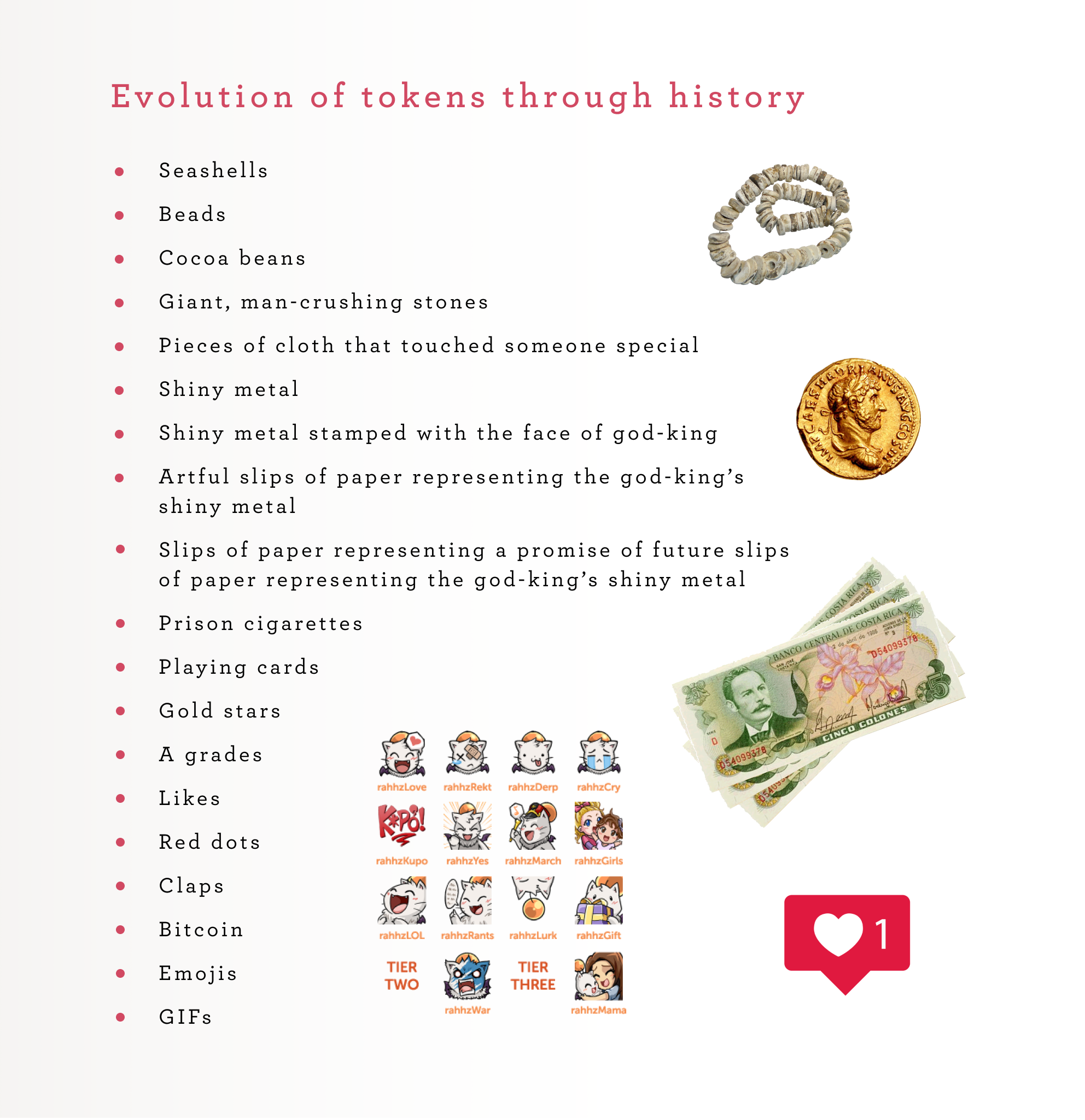
Call them silly, call them evil, but the truth is that without tokens we’d still be a planet of farmers fighting over how many loaves of bread a hammer is worth. Instead, we’ve abstracted needs and abilities to make them countable and tradable across space and time. Monetary tokens allow humans to specialize in niche interests without having to worry about the rest of life’s logistics. They create a world of non-zero-sum games, where strangers can trade on different values to create win-wins. They make risky, resource-heavy endeavors possible by allowing speculators to make bets on them. They make societies more liquid, enabling them to spread larger and faster like so many growing puddles. Tokens are profoundly powerful, necessary, and weird.

Seashells are thought to be one of the earliest forms of currency. Photo: Eduardo C.G./Unsplash
Consider how the story “Jack and the Beanstalk” was just an allegory for situations that probably happened all the time during the shift from agrarian to mercantile societies. How could a useless pocket of beans hold the same value as a cow? Depends on what the beans represent. What seemed like magic to an uneducated farmer was simply finance to his banker grandson. Cows to beans to a golden goose — it’s the story of material progress through symbolic flexibility.
Social media has mapped our human impulses of creation and consumption onto these virtual tokens to form the latest gears of our capitalist engine.
Tokens seem interchangeable with “money,” but in a broader context, you could design a token around all sorts of “value.” In today’s attention economy, where ubiquitous screens make eyeballs the biggest value substrate, new tokens have been designed to cater to the world’s eyeballs. And just like traditional financial instruments, they are subject to the whims of supply and demand, booms and busts, and the unpredictability of group psychology.
For example, Facebook designed a seemingly innocuous token in the form of that red-dotted globe in the upper-right corner of the page. Remember back in 2010 how thrilling it felt to see numbers flash in that red dot? How deflating it felt to see none? It wasn’t just a red dot. It was a symbol for social interaction, a social victory. It drove people’s desires to check the site and urged them to create content that might bring more of those red dots. Then, once Facebook started to artificially inflate the numbers appearing in that red dot (like giving one out for a person I barely knew in high school who just made a page for their real estate business), the value of the red dot weakened. Similar to the Zimbabwean dollar bill, we came to see Facebook’s red dots for what they are: trash. Or even worse — a piece of trash pushing Facebook’s profit agenda.
Instagram faces a similar dilemma with likes. Likes, after all, are tokens that symbolize real value. People earn money from likes, pay for likes, and create bots that counterfeit likes, and most modern brand equity is formed on the basis of likes. Now that we’ve built such a robust attention economy around likes, people are questioning whether these symbols should matter as much as they do. If everyone’s competing for countable like tokens, does it erode our noncountable social experience? Make us more mercenary about sharing our life’s story? Take us further from “real,” unquantifiable human connection?
We’re experiencing the same disillusionment that people like Charles Dickens felt in 19th-century London, when financial creativity in the bond market led to a rise of the merchant class, and this newfound material wealth started to feel like a spiritually empty pursuit, rewarding frivolous cynics and bullies. The banker became a symbol of greed and ruthlessness, even as banks spurred enormous material prosperity.
Economists often say that Americans vote in two ways: once at the polling station and once for every dollar they spend.
So it is with influencers chasing followers, online bullies spewing “hot takes,” all those fast-food meme factories, and the endless flood of compelling content that comes gushing with it all. We could hide likes in the interface, but without skin in the game, would we still get people’s best creative output? Does incentivizing “the best content” even matter when our speed-obsessed smartphone slot machines seem to most reward easy things like thirst traps and lifestyle porn? Can we create different social economies that work a little slower and use more thoughtful attention tokens (like what Medium is trying to do with claps)?
What we do know is that when powers try to overregulate the supply of their token, it can cause unforeseen consequences. Just look at the implications of blue check marks on Twitter and Instagram.
Perhaps we could make likes a more personal choice: to show or not to show. Or maybe we just do with social capital what we do with money: We chase it somewhat, give side-eye to the people who chase it harder than we do, chuckle at the idiotic and undeserved ways people end up getting it, all while trying not to let our own thirst for it override our personal integrity. Just as you are not your net worth, you are not your like or follower count. But also understand that some people might see you as those things, and you’re just gonna have to square with that.
One way to think about tokens is to view them as votes. Economists often say that Americans vote in two ways: once at the polling station and once for every dollar they spend. It’s true: You push your own values onto the political and economic spectrum by how you spend.
I’d go one step further and say that any token you give out — whether it’s a like, a follow, a notification — is also a vote. You’re stamping approval on that person or bit of content, thereby telling the algorithms that you want more of this type of thing in the world. So, one takeaway is: Don’t be careless with these trades. What you like and who you follow matter for yourself, sure, but also for everyone who might see or not see things based on your vote. And if you say, “Social media is dumb. I don’t care about the attention economy. I’m not going to participate,” understand that what you’re effectively doing is doubling the value of some diehard’s vote. By not voting for your own influencers, you’re letting others pick the influencers. By not curating your own content, you’re paying someone else to do it for you.
Now that tech companies design their own token economies, the abstractions are getting more complex as we climb further up Maslow’s hierarchy of needs. For instance, Twitch has tokenized every aspect of fandom through emotes and badges.
For the uninitiated, Twitch is a platform where anyone can live broadcast video to the world. You create a channel where fans can check in on you at any time to see what you’re up to. If you happen to be live, your streaming video appears on your channel, with a live chat window on the right of the screen for viewers to talk among themselves and to you. Basically it’s a chat room built around live internet TV.
When you hear it pegged as “dudes watching other dudes play video games,” that’s not quite right. It’s more like hanging out on the couch with your friends, where one of your friends is a world-class talent at something, or they’re entertaining to listen to, or both, and thereby a natural friend group forms around this charismatic leader.
“That 12-year-old who hordes ‘Fortnite’ stickers is basically an art collector.”
As an entertainment medium, livestreaming has elements of a podcast, a live sporting event, and a neighborhood bar full of regulars. And while this social media structure has been pioneered by loquacious gamers and savvy porn stars, it could really be used for anything — interviews, concerts, art shows, game shows, reality TV, debates, sporting events, movie premiers, anything “podcastable.” We’re still in livestreaming’s early days, where, similar to podcasts 15 years ago (with original pitches like “Listen to a recipe while you cook!”), you get the feeling that people are still figuring out cool things to do with it.
Twitch chat allows for tiered emotes and badges that can be unlocked via loyalty or money.
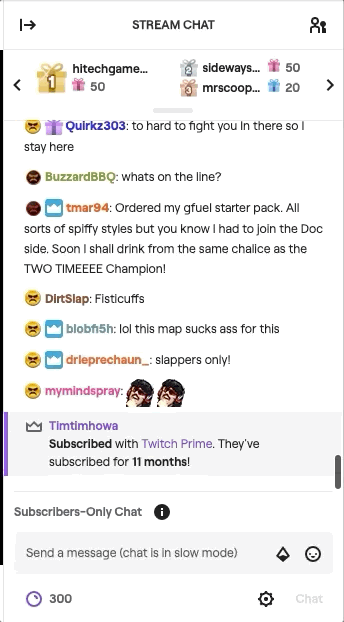
Twitch uses an open-source system of token design, where each channel has its own emotes and badges that can be used by its followers in the chat. From custom graphics to pop culture references to inside jokes to reaction memes of a streamer’s face, emotes serve as a visual form of clapping. So when a streamer does something funny, you’ll see a wall of different LOL emotes in the chat. If the streamer does something amazing — a stream of Pog emotes.
As tokens of cultural capital, emotes and badges are diverse enough to run the spectrum of viewer emotions, and they’re unique enough to stamp loyalty on the streamer’s brand. You have to subscribe — $5 a month for first tier — to gain access to a streamer’s quiver of emotes, and then you’re free to drop them in any other channel as a calling card to your allegiances. Badges work similarly: They are tokens that appear next to a user’s name when they’ve achieved escalating displays of loyalty to that streamer.
Sometimes a channel will raid another channel when one streamer hosts another streamer’s live video feed, thereby joining the two chat rooms. Emotes fly like flags into battle as the communities clash into one another, and the streamer being raided yells in excitement at seeing viewership double, triple, or grow ten times in size.
Painful nerdiness aside, it’s the type of game-within-a-game that makes this space so compelling. Badges hold the status of military rank and responsibility in the chat, while emotes display a fandom’s level of zeal and camaraderie. Together, they’re signifiers of status, so naturally, like anything else, you can fast-track this system by buying them with your parents’ money.
“That 12-year-old who hordes Fortnite stickers is basically an art collector,” says Matt Condon of the podcast Digitally Rare. And it’s true: Twitch turned these memeified tokens into a currency of appreciation, status, and sensibility — the same traits prized in art collection. They’re profiting off fans’ desire to show off subcultural literacy. They’re profiting off fans’ feeling of superiority for discovering someone cool “before they were big.” They’re profiting off fans’ desire to help out other fans and be seen as a community hero. (For example, you can bulk-purchase streamer subscriptions and hand them out publicly to the chat.)
Of course, gaming has pioneered digital token design and has gotten in trouble for it. But now you’re seeing it in companies like Facebook, YouTube, TikTok, Reddit, and anyone who jumped on the crypto bandwagon in the past few years.
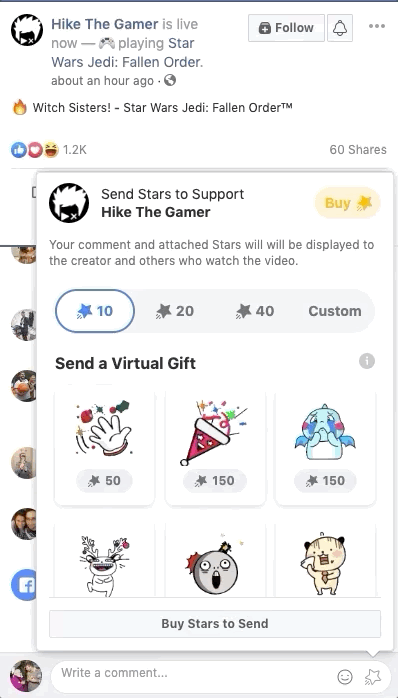
You could and should view the newest wave of tokens with suspicion. Most are born of the attention economy, for one, and what the attention economy rewards is not necessarily what human beings need. It’s another rat race, and you might wonder how kids raised to glorify like and follower counts could get their worldviews twisted. Especially when these token economies are designed by the opaque algorithms of tech giants.
Designers of both algorithms and interfaces play a crucial role in the ethical framework of tokens. They’re only symbols, after all, so we can inject in them whatever values we want. Facebook’s attempt to broaden their tokens from likes to a spectrum of reaction emoji was an earnest design effort to make the news feed more emotionally nuanced. In theory, this system of tokens incentivized people to post content that could be more than just liked. They could now post stuff that might incite laughter, sadness, love, amazement, or anger. They could now post “political news.”
Perhaps Twitch emotes look too juvenile and Byzantine from afar. But if you look closer, it’s a sophisticated system of branding and digital merchandising that empowers anyone to create their own subculture. If you’re an independent streamer on Twitch, you can design your own brand from the bottom up. You can create your own tokens with your own incentives and build a community that feels more intimate and interactive than mere followers. On top of that, markets are being created for designers who can craft emotes, badges, on-screen animations, and anything else that might go into these microbrands. It’s a giant non-zero-sum game that empowers a rich social ecosystem.
Of course, a large part of the Twitch business model still relies on collecting user data, intrusive advertising, and other bugaboos of social media strategy. And we can’t forget that the company is owned by Amazon. But at least Twitch is leaning toward a model where people pay directly for the content they want and support those creators in whatever novel ways they can think up. And as Netflix and HBO have shown, subscription models tend to favor more creative experimentation.
You might think it frivolous to watch people play video games all day, and that’s fair, but also consider that this place helps people find kinship and community in ways the “real world” has failed them. Gaming culture looks to be replacing mall culture and sports bar culture as the premier consumer-media hangout space. Instead of an ecosystem of corporations force-feeding us products we don’t need (the NFL is more ads than not), today’s forward-thinking media companies will create spaces where the customers are co-creators, and these creations resemble living, evolving communities rather than the resource-intensive, obsolescent product cycles of times past.
By some shrewd accounts, gaming appears to be the next logical step toward the Metaverse, a term coined in Neil Stephenson’s Snow Crash that describes the VR-/AR-enabled successor to the internet. In this world, the dividing lines between games, jobs, digital value, and real-world value all collapse into the same ether. “If you look at why people are paid to do things, it’s because they’re creating a good or delivering a service that’s valuable to somebody,” Todd Sweeney, CEO of Epic Games, told Venturebeat in 2017. “There’s just as much potential for that in these virtual environments as there is in the real world. If by playing a game or doing something in a virtual world, you’re making someone else’s life better, then you can be paid for that.”
It’s nothing new for people to make real money in the imaginary worlds of gaming: from gold farmers in World of Warcraft to $200,000 space fleets in Eve Online to the thousands of people selling games-within-games in sandbox worlds like Minecraft or Roblox. Fortnite is a free game that makes its money from digital fashion.
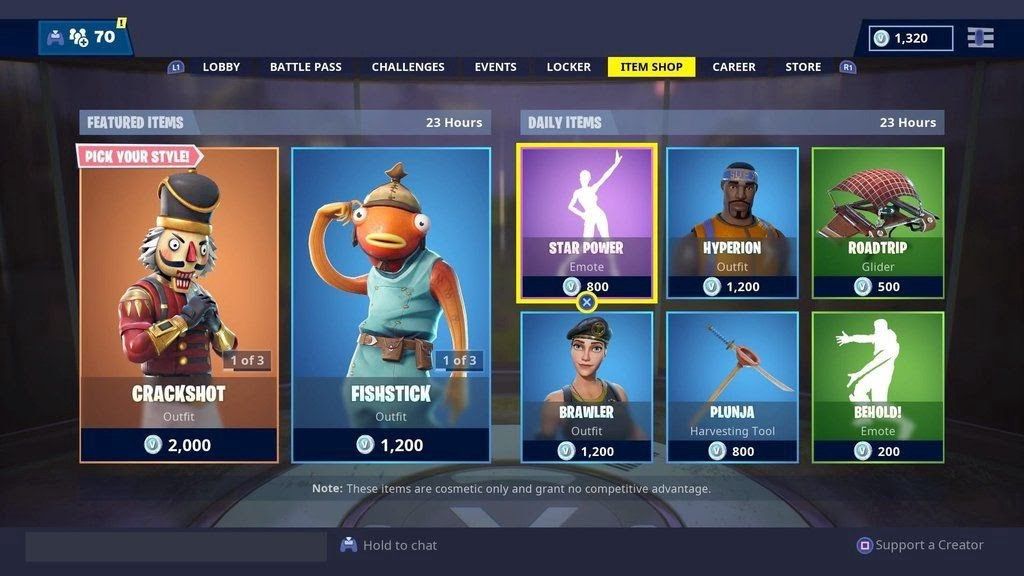
‘Fortnite’ created an economy of fashion, as players buy skins and gear with V-bucks, the game’s proprietary token.
Though the internet has birthed new games and ecosystems of value, we’re right to feel wary of how much the portals to these worlds are owned and controlled by tech giants — the bouncers of the current Metaverse. “There’s a difference between access and ownership in the physical world, but we’ve conflated the two in the digital world,” says Condon of Digitally Rare. “The concept of ownership on the internet is a misnomer. You don’t technically own your Facebook account… Facebook servers are lending it to you when you provide the password.” It’s the same with a Twitch user’s emotes or a Fortnite player’s exclusive gear, and it’s something gamers might feel the sting of when these games eventually fade away and their “collectibles” disappear along with them.
Tokens, as symbols of communicating, voting, and tracking value, have almost always been designed by centralized powers that run the collective arcade of socioeconomic games. And while Chase, Wells Fargo, and FAANG (Facebook, Amazon, Apple, Netflix, Google) aren’t de facto evil, they are largely amoral — driven by competition toward data mining, rent-seeking, and other monopolistic behavior. Not to mention the fact that fattened middlemen will always take as big of a cut as they can get away with, so there’s a simple lack of efficiency.
If you’re looking for a space to design something different, you might direct your efforts to the blockchain. Even though it’s become the sleazy love child of finance bros, tech bros, and get-rich-quick schemes — bitcoin as “digital gold” is actually just one narrow use case.
Humans cooperate by trading value, and keeping track of that value has evolved toward more efficiency over time. Image courtesy of the author
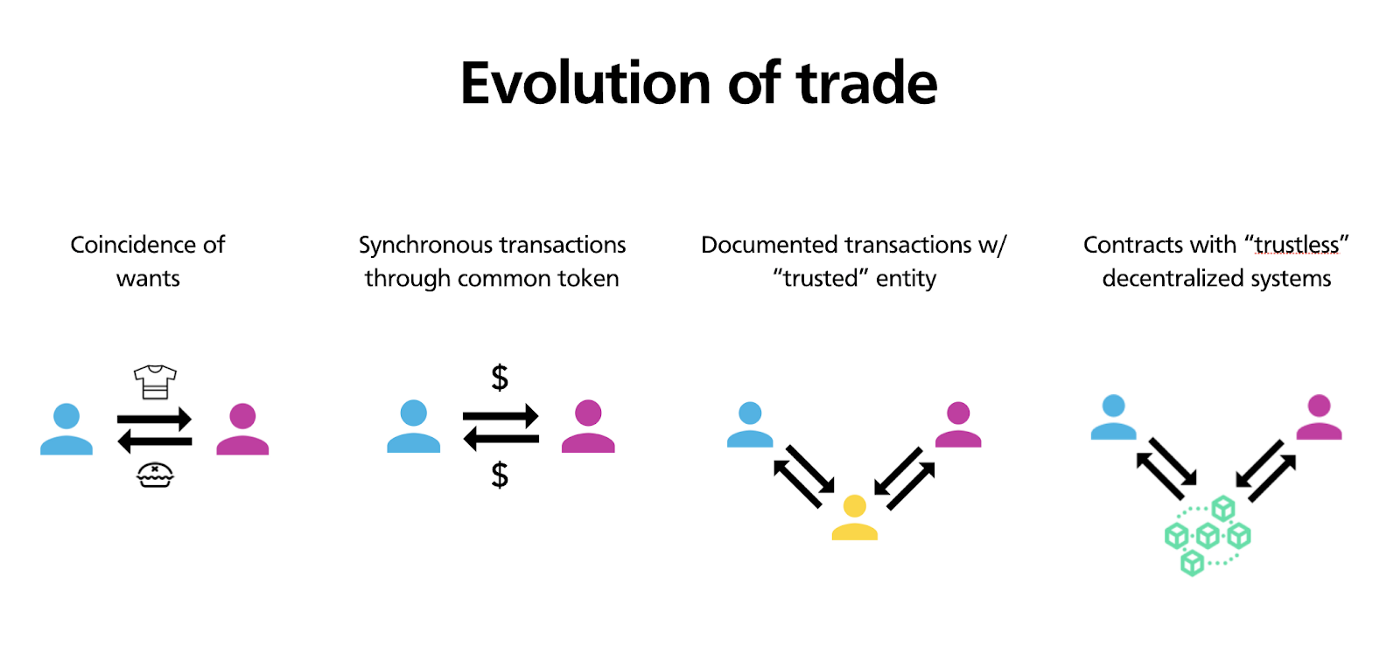
Really, what blockchain technology unleashes is the power of token design — the ability to create new, communal networks of value without having to trust anyone to run it. Things like quadratic voting, prediction markets, and decentralized finance are favorites in the cryptosphere. But maybe the most promising possibility of blockchains is digital scarcity.
Our current iteration of the internet drove distribution costs to zero. It also meant the end of scarcity. Everything became easily spreadable and infinitely copyable. Which is great for some businesses, less great for others. But with the blockchain, you can design nonfungible tokens that are still costless to trade but are also scarce, singular, unable to be copied, and untethered to anyone but the owner. They are governed solely by the laws of mathematics in the same way that a physical object is governed by the laws of physics. It’s a truly iron-clad layer of additional reality, uncontrolled by anyone, in the same way that a one-of-a-kind painting you own isn’t controlled by anyone but you. It’s your painting, your property, and you can do what you want with it.
“You don’t need to bring up the word ‘blockchain,’ the word ‘crypto,’ the word ‘token.’ We’re just talking about the concept of owning a digital thing,” Condon says, arguing that when it comes to the next killer blockchain use case, it’s unimportant whether people know the definition of economic jargon like fungibility. Because in truth, people may not care about “true ownership” as much as they care about whether their Fortnite avatar looks cooler than their friend’s.
But imagine if they could use AR to download something from the real world into the digital, bring it onto their computer at home, build it into something else, some other game, and then place their creation into another physical part of town. As people discover it, they can use it in their own games, and the original creators get a small kickback. I know this all sounds vague and abstract, but we could build systems like this without any company running it. It would just be.
For a social network to succeed, it should start from a place of pure value to users, rather than trying to be the next big social network from any grand philosophical perspective. Instagram took off because its filters made people’s shitty iPhone pictures look cooler. Facebook grew from a campus hot-or-not page. Similarly, the Metaverse will come from the bottom up, rather than the top down. It will come from games, and all the various games within games that players create around them. In an ideal world, we will all become designers of the games we play, the new jobs we create, and how they flow between the membrane of the digital and the real. It’s all about designing for incentives, designing games.
Raph Koster, author of A Theory of Fun for Game Design, distills the two most important attributes of a game designer:
- Be able to see the game with no hint of artwork, music, sound, anything — the bare rules, bare mechanics, bare actions, stats, feedback loops. The skeleton, the core, the bone and sinew of it.
- Be able to see the game without any mechanics, any rules, any knowledge of how it should play — to approach it as a user experience, the magical moment of immersion, the confusion, the dazzle and colors, the sheer sense of possibility and play.
These are the two poles of logic and empathy that any designer should be familiar with. The ability to think in big-picture systems, as well as the desire to dig into personal details. We need to zoom out and understand how token economics work. But we also need to zoom in on the user’s direct experience, to feel the emotions that come from winning and losing, learning and growing. The internet shines where technical creativity and emotional possibility intersect.
Read something else


